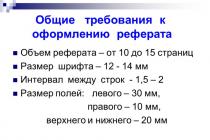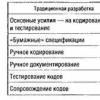When buying shares and other financial assets, they worry about their future value and fear an unfavorable movement in the market value. The easiest way to protect in this case is to place a stop order to close the deal (stop loss). But a stop loss is not always effective, because sometimes the price can “pierce” it a little, and then turn around, but without a trader. Much more effective way is hedging. In fact, hedging is a risk management tool that allows, by acquiring one asset, to compensate for the possible unfavorable movement of another.
Fig.1. An example of a sharp downward price movement followed by a reversal.
Hedging is a lot like insurance. No wonder the term comes from the English. hedge - insurance. For a small fraction of the cost of the car, owners purchase insurance policies that entitle them to receive payment in the event of an adverse event with vehicle. The same is possible with the help of financial risk hedging instruments when trading on the stock exchange. By buying an asset on the exchange, you can acquire the right to sell it in a certain amount until a certain date in the future for a cost several times less than the value of the asset (like an insurance policy, it is cheaper than a car).
Risk hedging instruments
The most common risk hedging instruments are derivatives market assets - futures and options, which are contracts for a transaction in the future at predetermined prices. The buyer's risk is the uncertainty of the selling price, while the seller's risk is the uncertainty of the subsequent purchase price. And derivatives market instruments just allow you to determine this price in advance, making it possible to hedge both long and short investor positions. Futures contracts are contracts that give a mutual obligation to buy / sell an asset on a certain date in the future at a predetermined price.
Futures are presented for various groups of assets: for indices, for stocks, for bonds, for currencies, for commodities. Hence, allow them to be hedged.
The second group of derivatives market assets is options, and in the domestic market, options are presented just for futures contracts.
An option is the right to buy/sell a certain amount of the underlying asset (the corresponding futures) before a certain date in the future. Since options are contracts for futures, therefore, their asset groups are the same.
It should be noted that not only derivatives market instruments are hedging assets. In the presence of a certain conjuncture, other exchange-traded assets may also serve as hedging purposes.
How to learn to hedge with futures and options? Read our special, which contains many practical examples.
Basic hedging methods
- Classical hedging appeared on the Chicago Commodity Exchanges. When, due to the risks of non-execution of transactions postponed for various reasons (for example, the supply of wheat that has not yet grown on a certain date), an option for the supply of this product at the price of the original contract.
- Direct hedging is the simplest hedging method. Having a certain asset and fearing for its future exchange rate, the investor enters into a fixed-term contract for its sale, thereby fixing the selling price for the period of the fixed-term contract.
- Anticipatory hedging can serve as a hedging tool currency risks when planning a deal. When planning the further execution of the transaction and observing the appropriate value of the asset in this moment, the investor buys a futures contract for the specified asset, as a result of which its current value is fixed for a transaction in the future.
- Cross hedging is often used to hedge a portfolio of securities. The essence of the method is to conclude a futures contract not for an existing asset, but for another, with a certain degree of similarity in trading behavior. For example, to hedge a portfolio consisting of many securities, with certain concerns about a possible decrease in its value, you can sell futures or option contract on the RTS index, which is a barometer Russian market. Thus, the investor assumes that in the event of a decrease in the portfolio as a whole, the market will most likely also have a downward trend, so a short position on a futures contract on the index will give a profit, softening the drawdown of the portfolio.
- Directional hedging. If an investor has a certain number of long positions in the portfolio and is afraid of their exchange rate decline, the portfolio must be “diluted” by a certain amount with shorts on weaker securities. Then, during the period of general decline, shorts that decline faster than long positions will make a profit, compensating for the loss of longs.
- Cross-industry hedging. If there are securities of a certain industry in the portfolio, they can be “insured” by including longs on securities of another industry in the portfolio, which is more prone to growth when the first one decreases. For example, a decline in domestic demand papers when the US dollar rises can be hedged by including longs on exporters' papers, which traditionally grow with an increase in the value of the currency.
Now that you are familiar with the basic risk hedging tools, it's time to start learning strategies. And then try to put them into practice.
Insurance (in the form in which all people know it) is one of the most popular services. We insure against fires, theft of personal property, against natural phenomena and so on. The investment world also has its own insurance, but here a different, more specialized term is used - "".
What it is?
The essence of hedging
To understand the basic essence of investment insurance, let's look at a simple example. You bought a certain volume of oil products for its further resale. Naturally, it is unlikely that it will be possible to sell it immediately and at the most favorable price. In such a situation, the only way out is to sell futures contracts for it. After the oil products have been sold on the real market, they can be bought back. What happens if prices for petroleum products fall in the real market? You will, of course, incur losses. If prices in the real market, on the contrary, have increased, then you can count on additional profit and compensation for your costs. Thus, income in one market is able to cover a losing trade in another. In turn, the consumer of raw materials can also be insured. For example, he knows that the goods will be needed after some time. Naturally, its cost for a specific period may increase and a person wants to insure against this. How to act? All that is needed is to buy futures contracts with the position of the month when the purchase will be made. After the purchase of the real goods, the contract can be liquidated. The real and futures markets are closely related. Do not be surprised that the cost of futures contracts and real goods is different - this is a common occurrence. There is no perfect hedge. But if you timely correlate the futures and real prices, you can achieve an almost perfect result and minimal risks. The higher the value, the better for the investor. Of course, there are always risks that the change in the cost of the goods cannot be fully compensated by futures prices. But the main goal is to reduce risks, and it will not be difficult to realize it.
short and
You must remember that there are two main stages in any trade that uses hedging. On the first one, the main task is on a futures contract, and on the second one, to close it with a reverse deal. And most importantly, contracts for both positions should be opened for one product, with the same quantity and for the same delivery time.  If hedging is classified according to the technique of conducting a trade transaction, then two main types can be distinguished:
If hedging is classified according to the technique of conducting a trade transaction, then two main types can be distinguished:
1) Sell hedging. In this type of insurance, those market participants who have a long position in the real market must use a short position in the futures market. This method of protection is intended for sellers who want to protect the price of their products. It is very effective when it needs to protect financial instruments (securities) or commodities not covered by forward contracts. But this species hedging must begin with the sale of a futures contract, and end with a purchase.
2) Hedging by buying. Here we are talking about the opposite nature of the transaction. Market participants with a short position in the real market must purchase a futures contract. In such a situation, it allows you to fix the cost of the goods at the same level and protect yourself from further growth in its price. This type of insurance is used in great demand from intermediary companies that work with large volumes of orders for the purchase of goods over a period of time. Buy hedging is also relevant for processing companies. Transactions in the futures market allow you to temporarily replace and thus protect against a sharp increase in price.
With the emergence of trade relations, their participants were looking for ways to protect themselves from possible risks associated with price fluctuations. Every year, trade has developed, as a result, exchanges have appeared that provide regular trade deals on commodities. With the emergence of world trade, facts of large sales and purchases, amounting to billions of dollars, are increasingly recorded. Accordingly, those who conduct them are interested in maximum profit and, of course, in minimum losses. This trend has led to special ways to hedge or "hedge" against the risks of price fluctuations.
Hedging: the essence
Hedging in translation from English means "fencing", - this is insurance of one's capital or resources against possible risks directly accompanying the purchase and sale operation in the future. Risk - the threat to lose part of their resources or incur additional costs and, accordingly, be left with unforeseen losses.
All investors know that the greater the risks, the greater the possible profit, but not everyone is inclined to put their investments at risk. high level. Paying for protection through risk hedging involves the loss of a possible part of the income in the future.
Typically, risk hedging techniques are interesting for short-term fluctuations, and investors seeking to profit financially from long-term trends do not use such insurance.
- Hedging of currency risks is based on the conclusion of term agreements for the purchase and sale of foreign currency in order to avoid the impact of fluctuations in its value on the transaction.
- There is also hedging of interest rate risks. The interest rate can be considered as an asset, since interest is the price for using money.
- Hedging banking risks covers a wide range of operations, as banks work with large amounts of money and different clients.

Risk hedging: methods, tools
The objectives of hedging financial risks can vary widely. Therefore, each goal requires its own financial strategy, which is developed using existing tools.
These hedging instruments are:
- Option;
- Futures;
- Forward;
- Swap.
Each hedging method, whether it be currency risks or interest rate or financial threats, is directly related to the use of these instruments.
Consider the meaning and application of each of them:
- Options are contracts under which their owner can purchase or sell assets at a predetermined price at a specified time or period of time, but is not obliged to do so, but the seller of the option is obliged to commit to pre-agreed conditions.

Options hedging example
Suppose you own shares of company A and your assumptions tend to be that shares in long term will go up. But knowing that there is a threat of a short-term decline, you decide to hedge against the fall. In this case, you acquire an option with the ability to sell shares at the appropriate value and if your fears are real, i.e. a price drop below that specified in the option, you sell your assets on the terms prescribed by the contract.
- Futures (future contract) is an agreement that obliges both the seller and the buyer to fulfill the terms of the contract at a strictly agreed time, the terms of which are a fixed price for a certain number of assets for which a future transaction must be made.
An example of hedging with futures contracts
Suppose there is a manufacturing company B and it needs to periodically purchase certain raw materials. To protect yourself from possible increase the price of that raw material, Company B hedges itself with a fixed-price futures contract for a desired quantity of the commodity it will purchase in the future. It turns out that if the cost of goods increases, this will not affect company B in any way, and if it falls, it will overpay.
- A forward contract, like a futures contract, is concluded at a future price and is obligatory in its execution, but these contracts have significant differences. Forward contracts, unlike futures contracts, are concluded on the market outside the exchange with the obligatory delivery of goods to the buyer, and payment is made at the time of purchase and sale. Futures contracts are standardized and operate within the exchange. The guarantee of fulfillment of obligations for the purchase and delivery of goods is a cash guarantee in the form of a margin contributed by the trader.
- A swap is a tool that involves the sale of assets with their subsequent repurchase at a set price. A swap is an over-the-counter transaction, not standardized, the volumes and terms are set by the parties by mutual agreement.

Risk management methods or types of hedging that use the above tools:
- Derivatives;
- Portfolio Immunization.
According to the technique of the operation, they are distinguished into:
- High hedge (long hedge or buy hedge). This is a procedure for acquiring futures contracts and options. Hedging with a purchase is necessary to establish the purchase price now, thereby insuring yourself against it. possible growth further.
- Downward hedging (short hedging or selling hedging). This process is used when you need to sell the item later. Term agreements are drawn up indicating the cost of the sale, which will occur after a certain time.
Types of hedging, i.e. risk insurance:
- Classic or pure. The oldest type of hedging, risk management. This type is characterized by the opening of two opposing transactions, one on the stock exchange, the other on the market for real goods;
- Partial or complete. Hedging is carried out for the full and partial amount of the agreement within the futures market;
- Anticipatory. The stock market is the area where this type of insurance is predominantly used. This type of insurance is based on advance purchase or sale fixed-term contracts;
- Cross. The name of this hedging speaks for itself. It consists in cross transactions, in the real market an operation is performed on one asset, and on the futures on another;
- selective. With the help of such hedging, you can play with assets, expose one to more risk, and protect the other as much as possible. The difference between market transactions can be in volume and time;
- Hedging (rehedging) with options. If there are already open options to reduce financial risks, more asset positions are opened.

Using methods to avoid short-term threats is guaranteed to stabilize profitability and saves nerves, and sometimes time spent on a forced reaction that accompanies minor price fluctuations in the market.
HEDGING
HEDGING
(Hedging against inflation) Protecting your capital from inflationary shocks by buying shares (equities) or investing in other assets, the value of which should rise as prices rise.
Finance. Dictionary. 2nd ed. - M.: "INFRA-M", Publishing house "Ves Mir". Brian Butler, Brian Johnson, Graham Sidwell et al. Osadchaya I.M.. 2000 .
HEDGING
HEDGING - a form of price and profit insurance when making futures transactions, when the seller (buyer) simultaneously purchases (sells) the corresponding number of futures contracts. HEDGING enables entrepreneurs to insure themselves against possible losses by the time a transaction is liquidated for a period of time, increases the flexibility and efficiency of commercial operations, and reduces the cost of financing trade in real goods. HEDGING allows you to reduce the risk of the parties: losses from changes in commodity prices are offset by gains on futures.
Glossary of financial terms.
Hedging
Finam Financial Dictionary.
Hedging
Hedging - on currency markets- purchase (sale) of currency contracts for a period simultaneously with the sale (purchase) of cash currency with the same delivery time and the reverse operation with the actual currency delivery date.
In English: Hedging
Finam Financial Dictionary.
Hedging
Hedging - in the markets of real goods - reducing the risk of losses due to adverse changes in market prices for goods that are to be sold or bought at future prices.
In hedging, the seller (buyer) of a commodity enters into an agreement for its sale (purchase) and at the same time carries out a futures transaction of the opposite nature. In this case, any change in price brings sellers (buyers) a loss on one contract and a gain on another.
Finam Financial Dictionary.
Hedging
Hedging - in the markets for futures contracts - the protection of open positions at risk, the price of which must fluctuate during the period while the position remains at risk.
Finam Financial Dictionary.
Hedging
Hedging - in the futures markets - a form of price and profit insurance when making futures transactions, when the seller (buyer) simultaneously purchases (sells) the corresponding number of futures contracts.
Finam Financial Dictionary.
Hedging
Hedging is insurance against the risk of price changes by taking an opposite position in a parallel market.
Hedging:
- makes it possible to insure yourself against possible losses by the time the transaction is liquidated for a period;
- provides increased flexibility and efficiency of commercial operations;
- provides a reduction in the cost of financing trade in real goods;
- allows you to reduce the risks of the parties: losses from changes in commodity prices are offset by gains on futures.
In English: Hedging
Finam Financial Dictionary.
Hedging
What's happened hedging?
The modern economy is characterized by significant price fluctuations for many types of goods. Producers and consumers are interested in creating effective mechanisms that can protect them from unexpected price changes and minimize adverse economic consequences.
In the activities of any company, whether it is an investment fund or an agricultural producer, there is always financial risks. They can be associated with anything: the sale of manufactured products, the risk of depreciation of capital invested in any assets, the purchase of assets. This means that in the course of their activities, companies, other legal entities and individuals, face the possibility that as a result of their operations they will receive a loss, or the profit will not be what they expected due to an unforeseen change in prices for that asset, with which the operation is performed. Risk involves both the possibility of loss and the possibility of gain, but people, in most cases, are risk averse, and therefore they are willing to give up more profit in order to reduce the risk of loss.
For this, derivative financial instruments were created - forwards, futures, options -, and risk reduction operations using these derivatives were called hedging(from the English hedge, which means to enclose with a hedge, limit, evade a direct answer).
The concept of hedging impossible to uncover risk.
risk it- the probability (threat) of losing part of their resources, shortfall in income or incurring additional expenses as a result of certain financial transactions.
Any asset cash flow or the financial instrument is at risk of impairment. These risks, according to the generally accepted classification, are divided mainly into price and interest risks. Separately, one can single out the risk of non-fulfillment of contractual obligations (since financial instruments are essentially contracts), called credit risk.
Thus, hedging is the use of one instrument to reduce the risk associated with the adverse effect of market factors on the price of another instrument related to it, or on the cash flows generated by it.
Usually hedging means simply insurance against the risk of changes in the price of an asset, interest rate or exchange rate using derivative instruments, all this is included in the concept financial risk hedging(because there are still other risks, such as operational ones). Financial risk is the risk that a market agent is exposed to due to its dependence on market factors such as interest rates, exchange rates and commodity prices. Most financial risks can be hedged due to the presence of developed and efficient markets where these risks are redistributed among the participants.
Risk hedging is based on a strategy to minimize unwanted risks, so the result of the operation may also be a decrease in potential profit, since profit, as you know, is inversely related to risk.
If earlier hedging was used solely to minimize price risks, now the goal of hedging is not to remove risks, but to optimize them.
Hedging mechanism consists in balancing liabilities in the cash market (commodities, securities, currencies) and opposite in direction in the futures market. So, in order to protect against monetary losses on a certain asset (instrument), a position can be opened on another asset (instrument), which, according to the hedger, is able to compensate for this type of loss.
Thus, Hedge (hedge) is a specific investment made to reduce the risk of price movements, such as options or short sales;
The cost of a hedge should be valued taking into account possible losses if the hedge is abandoned. In this regard, it should be noted that strategies based on derivative financial instruments are used instead of traditional methods precisely due to lower overhead costs due to the high liquidity of derivatives markets.
Glossary of terms and abbreviations of the forex market, Forex EuroClub.
Hedging
Loss insurance. An operation undertaken by a trader or dealer who wishes to protect an open position at risk, primarily the sale or purchase of a commodity, currency, security, etc., the price of which must fluctuate over the period that the position remains at risk. For example, a manufacturer has entered into a contract to sell a large batch of goods in six months. If its production depends on the supply of raw materials, the price of which fluctuates, and if it does not have sufficient stocks of these raw materials, it is in a position at risk. He may decide to secure his position by acquiring necessary raw materials under a futures contract. If you have to pay for raw materials foreign exchange, the currency needs of the producer can be insured by purchasing the desired currency under a forward contract or by way of an option. Such transactions do not provide complete protection, since spot and futures prices do not always coincide, but hedging can significantly reduce the vulnerability of a position at risk. Buying futures and options to protect against risk is just one type of hedging and is called a "long" hedging. In "short hedging" something is sold to cover the risks. For example, a fund manager may have a large long-term fixed income investment package and fears that an expected increase in interest rates will reduce the value of the portfolio. This risk can be insured by selling interest rate futures on the financial futures market. If interest rates rise, the loss in the value of the portfolio of securities will be offset by profits received by offsetting the sale of futures at a lower price.
Terminological dictionary of banking and financial terms. 2011 .
Synonyms:
See what "HEDGING" is in other dictionaries:
- (from the English hedge insurance, guarantee) opening transactions in one market to compensate for the impact of price risks of an equal but opposite position in another market. Usually hedging is carried out in order to insure the risks of price changes ... ... Wikipedia
hedging- A risk management strategy aimed at reducing or recovering potential losses due to price fluctuations. [Department of Linguistic Services of the Sochi 2014 Organizing Committee. Glossary of terms] hedging Member insurance… … Technical Translator's Handbook
- (hedging) An operation undertaken by a trader or dealer who wants to protect an open position at risk (open position), primarily the sale or purchase of a commodity, currency, security, etc., the price of which must fluctuate during ... ... Glossary of business terms
- (hedging) An operation that is intended to reduce the risk resulting from other operations. If the company has stocks of goods, then it is exposed to the risk of losses in the event of a price drop. This loss can be avoided by hedging… Economic dictionary
Loss insurance, insurance deal Dictionary of Russian synonyms. hedging noun, number of synonyms: 6 insurance (5) ... Synonym dictionary
Hedging- insurance of participants in a commercial transaction against losses associated with a possible change in prices during its implementation. By concluding a contract in the futures market, the hedger agrees with the counterparty on the delivery of his goods in advance ... ... Economic and Mathematical Dictionary
Hedging- – insurance of financial risks by taking the opposite position on the asset in the market. For example, a company produces a certain number of tons of oil per month. But she does not know how much her products will cost in three months. She gets… Banking Encyclopedia
Insurance of currency and other risks through foreign trade and credit operations, changes in the currency of a trade or credit transaction, creation of reserves to cover possible losses, etc. In a narrower sense, foreign exchange risk insurance through ... ... Law Dictionary
- [Dictionary of foreign words of the Russian language
Hedging- (eng. hedging, from hedge to protect) a term used in banking, stock exchange and commercial practice to refer to various methods of currency risk insurance ... Encyclopedia of Law
Books
- Fundamentals of financial computing. Asset portfolios, optimization and hedging. Textbook, Yury Fedorovich Kasimov, Al-Nator Mohammed Subkhi, Alexey Nikolayevich Kolesnikov. The third part deals with stochastic methods for analyzing financial markets. It outlines the modern portfolio theory (Markowicz theory) and the Financial Asset Pricing Model (CAPM).…
In the system of enterprise risk management methods, the main role belongs to internal mechanisms.
Internal mechanisms for neutralizing financial risks are methods for minimizing their negative consequences, chosen and implemented within the enterprise itself.
These include:
risk avoidance;
limitation of risk concentration;
hedging;
diversification;
creation of special reserve funds (self-insurance funds or risk fund);
insurance.
Hedging is a system for concluding futures contracts and transactions that takes into account probable future changes in exchange rates. exchange rates and aiming to avoid the adverse effects of these changes.
In a broad interpretation, "hedging" characterizes the process of using any mechanisms to reduce the risk of possible financial losses - both internal (carried out by the enterprise itself) and external (risk transfer to other business entities - insurers). In a narrow sense, the term "hedging" characterizes an internal mechanism for neutralizing financial risks, based on insuring risks against adverse price changes for any inventory items under contracts and commercial transactions involving the supply (sale) of goods in the future (as a rule, derivative securities - derivatives).
The contract, which serves to insure against the risks of changes in exchange rates (prices), is called a "hedge", and the business entity that performs hedging is called a "hedger". This method makes it possible to fix the price and make income or expenses more predictable. However, the risk associated with hedging does not disappear. It is taken over by speculators, i.e. entrepreneurs who take a certain, pre-calculated risk.
There are two types of hedging: up hedging and down hedging.
An upward hedging (purchase hedging) is an operation to buy futures contracts or options. An upward hedge is used in cases where it is necessary to insure against a possible increase in prices (rates) in the future. It allows you to set the purchase price much earlier than the actual product was purchased. An up hedging hedger insures itself against a possible rise in prices in the future.
Downward hedging (selling hedging) is an exchange transaction with the sale of a futures contract. A hedger who hedges down expects to sell a commodity in the future, and therefore, by selling a futures contract or option on the exchange, he insures himself against possible reduction prices in the future. A short hedge is used when a commodity needs to be sold at a later date.
Depending on the types of derivative securities used, the following financial risk hedging mechanisms are distinguished.
1. Hedging using futures contracts is a mechanism for neutralizing risks in operations on the commodity or stock exchanges by conducting opposite transactions with various types of exchange contracts.
The principle of the hedging mechanism using futures contracts is based on the fact that if an enterprise incurs financial losses due to price changes at the time of delivery as a seller of a real asset or securities, then it wins in the same amounts as a buyer of futures contracts for the same number of assets or securities and vice versa.
2. Hedging using options - characterizes the mechanism for neutralizing risks in transactions with securities, currency, real assets or other types of derivatives. This form of hedging is based on a transaction with a premium (option) paid for the right (but not the obligation) to sell or buy a security, currency, real asset or derivative within the period specified in the option contract in a specified amount and at a predetermined price.
3. Hedging using a swap operation - characterizes the mechanism for neutralizing risks in transactions with currency, securities, debt financial obligations of the enterprise. The swap operation is based on the exchange (purchase and sale) of the corresponding financial assets or financial liabilities in order to improve their structure and reduce possible losses.
Swap (eng. Swap i.e. exchange) is a trade and financial exchange operation in the form of an exchange of various assets, in which the conclusion of a transaction for the purchase (sale) of securities, currencies is accompanied by the conclusion of a counter-transaction, a transaction for the resale (purchase) of the same product through for a certain period of time under the same or other conditions.
Hedging example: let's say you are a shareholder of Gazprom, and you expect the stock to grow in the long run. But fearing a short-term price reduction, you insure, i.e. hedge against the fall. To do this, you buy an option with the right to sell (English put option) shares of Gazprom at a certain price. If suddenly your fears become a reality and market price shares fall below the price specified in the option (English strike price), then you simply sell the share at this price specified in the option.














